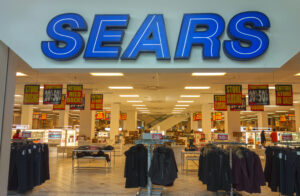How corporate boards of founder and family-led companies can adapt to ownership and executive leadership changes with agility.
Although perhaps not a household name to many outside of Japan, Kongō Gumi—a construction company based in Osaka—has long held the moniker of “world’s oldest family-run company.” Just how old, you ask? 1445 years, to be exact.
Should one be interested in tracing Kongō Gumi’s corporate linage to the very beginning, look no further than the company’s 10-foot-long, 17th-century scroll that traces back 40 generations to the firm’s creation in 578 A.D. by founder Shigemitsu Kongō.
In the case of Kongō Gumi, a few key factors contributed to the company’s enduring longevity.
First, the practice of sons-in-law taking the family name when they joined the firm—thereby allowing the company to continue with the same name during periods when no direct male heir was apparent—ensured both sons and daughters could continue the family line.
Moreover, the company essentially wrote the book on constructing Buddhist temples. In the centuries since their founding, Kongō Gumi has erected hundreds of temples, gates, and buildings, including the Osaka Castle, which is one of Japan’s most important cultural landmarks.
Yet, a decision to go public in 2005 shifted the business into the realm of a post-founder family enterprise.
For Kongō Gumi and Masakazu Kongō—the 40th and final Kongō to lead the firm—the decision to go public was seen as a way to raise much-needed capital and increase the company’s access to financing, which had been depressed for decades due to exorbitant debt on their balance sheet.
Additionally, financial difficulties related to a decline in demand for traditional Japanese-style temples and other wooden structures, and an increase in competition from larger, more modern firms, was a key driver as well.
However, the decision to go public was not without controversy, as some members of the founding family were reportedly opposed to the idea of relinquishing control of the company. Ultimately, it would seem, even the world’s oldest family-owned firm was not immune from disruption within its ownership structure.
In January 2005, Kongō Gumi went public with shares offered on the Osaka Securities Exchange. Yet, just one year later, the company was acquired by Takamatsu Construction Group Co. Ltd., a larger Japanese construction group founded much more recently in 1917.
Although Kongō Gumi’s superlative record may never be challenged, they are certainly not the only family-run business thrust into the world of post-founder family enterprises.
According to a study by the Harvard Business Review, approximately 33% of Fortune 500 companies are founder and family-led companies, although the report notes that percentage can fluctuate over time, as companies may change ownership or control structures.
Additionally, some of the world’s largest brands faced similar transitions at different points in their history when moving away from founder-or-family-led ownership structures into that of a post-founder family enterprise. They include:
- Ford Motor Company: Henry Ford founded Ford Motor Company in 1903 and served as its CEO until his son, Edsel Ford, took over in 1919. Since then, the company has remained in the hands of the Ford family, with various family members serving in leadership positions.
- Walmart: Sam Walton founded Walmart in 1962 and was succeeded as CEO by his eldest son, S. Robson Walton, in 1992. The company is now primarily controlled by the Walton family.
- Samsung Group: Lee Byung-chul founded Samsung Group in 1938 and was succeeded as CEO by his son, Lee Kun-hee, in 1987. After Lee Kun-hee’s death in 2020, his son, Lee Jae-yong, took over as de-facto leader of the company.
- Comcast: Ralph J. Roberts founded Comcast Corporation in 1963 and was succeeded as CEO by his son, Brian L. Roberts, in 2002. The Roberts family still controls a majority of the company’s voting shares.
For these and other founder and family-led companies, the key to flourishing generations after their initial founders departed requires adapting to change with agility. However, there are additional variables to consider, such as what involvement and influence boards should exercise during, and after, a company has transitioned or changed hands.
“To understand the future of your family’s enterprise, you need to gain altitude,” says John Davis, Faculty Director for the Future Family Enterprise Program at the MIT Sloan Business School. “[Don’t] think just about management and operational excellence, but also think about what it is that you own, how it’s owned, where your enterprise is going, and how disruption is affecting the environment.”
Perfecting Professionalization
Although much has been written about the role boards play in terms of traditional succession planning, founder and family-led companies harbor a unique set of variables to consider.
Two specific areas where boards can play an active role are, A.) the process of bringing in non-family executives and implementing best practices to ensure the company’s continued growth—known as professionalization—beyond family or founder-led status, and B.) shepherding the organizations’ succession to a non-family member or sale.
In his book, Family Business, author Ernesto Poza defines professionalizing as the process of transforming a family business from an informally run organization, with decision-making concentrated in the hands of family members, to a more formally run organization, with decision-making based on sound business principles and practices, and with roles and responsibilities defined and assigned based on merit and qualifications, rather than family status alone.
Poza, a fellow at Cambridge Institute for Family Enterprise—a leading education and research center dedicated to family enterprise issues—is not the only academic to suggest that boards can either greatly help or hinder an enterprise through a period of great transition.
“[Although] most executives agree that it’s management’s responsibility to develop the company strategy and then discuss it with the board…we also commonly hear from founders that they don’t need a board because they already know what’s right for their company,” writes Mary Ann Cloyd, in “What Is a Board’s Role in a Family Business?” published by the Harvard Law School Forum on Corporate Governance.
Cloyd suggests that a lack of board input—or the complete absence of a board entirely—is a dangerous liability, noting that when an enterprise faces a new situation, such as a change in ownership structure, an established board that understands a family-led business can help executives respond to innumerable challenges with sound advice and perspective.
“[Smucker’s] fourth-generation family members have taken the company to the next level by professionalizing management and modernizing the management of the firm,” says Poza, who notes the Smucker family, “brought with them strategic planning processes, the latest financial concepts and methods along with a cadre of key non-family management that was every bit their peer in age and managerial education.”
Professionalization can be a competitive advantage for founder and family-led companies, says Poza, to cites evidence that family firms often outperform non-family firms, but, “only if professionalization of the management of the firm has been achieved and a board that provides advice and independent oversight is present.”
Succession To a Non-Family Member (or Sale)
In Leaving a Legacy: Navigating Family Businesses Succession, author David C. Bentall writes that succession to a non-family member can be a viable option when there is no family member who is willing or able to take over the business, or in the case of sale to a third party.
“It is important to identify and recruit a successor who shares the values and vision of the family and who has the necessary skills and experience to lead the business forward. This process may involve searching for external candidates, evaluating internal candidates, or a combination of both,” he writes.
One cautionary tale of what can happen when a successor does not share the values or vision of the founder after transitioning from a family-led organization into a publicly traded company is that of Sears.

Founded by Richard Warren Sears and Alvah Curtis Roebuck in 1893, Sears grew rapidly, becoming one of the largest retailers in the United States. Yet, in the 1980s, the company began to struggle as it faced competition from discount retailers like Walmart and Target.
In an effort to turn the company around, Sears brought in outside executives and began to focus more on financial engineering than on retail operations. This led to a series of missteps, including the acquisition of Dean Witter Reynolds and Coldwell Banker, which distracted the company from its core retail business.
In 2005, Sears merged with Kmart, another struggling retailer, in an $11 billion deal (USD) that was intended to create a stronger competitor to Walmart. However, the merged company continued to struggle, as it failed to adapt to changing consumer trends and faced intense competition from e-commerce giants like Amazon.
In 2018, Sears filed for bankruptcy and began to liquidate its stores, marking the end of one of America’s most iconic retailers.
The failure of Sears has been attributed in part to the company’s transition from a founder and family-led company to a publicly traded one, as the new executives who took over the company were more focused on financial engineering and short-term profits than on building a sustainable business for the long term.
“Ultimately, Sears failed because it lost touch with the needs and preferences of its customers, and it failed to invest in its stores and its online presence in a meaningful way,” said Neil Saunders, managing director of GlobalData Retail in an interview with CNBC.
According to author Bentall, once alignment is found between a family-controlling group and external successor, boards can play a key role by, “developing a comprehensive succession plan that includes a clear timeline, a transition strategy, and a plan for communicating the transition to employees, customers, and other stakeholders.”
Bentall advises companies that their succession plan should also, “address issues such as compensation, incentives, and governance structures, to ensure that the new leader has the support and resources necessary to lead the business successfully.”
Protecting CEO Value
One final variable to consider is how a CEO can protect their value while helming their company through such a transition, especially if he or she plans to remain chief executive after the sale of their company, or when it is listed on a public exchange. One such example of a family-led company that went public with the same CEO is Walmart.
Founded by Sam Walton and his brother in 1962, Walmart remained a private company until it went public in 1970, wherein Sam Walton continued to serve as the CEO until his death in 1992. Today, Walmart (NYSE: WMT) is still run by members of the Walton family, and it is one of the largest and most successful retailers in the world.
As is the case with Walmart, the CEO in founder and family-led companies is often a family member or someone with a deep understanding of its values and culture. However, once their company goes public, the CEO’s role may shift to a more strategic and corporate-focused position, as they have a greater responsibility to the shareholders and must make decisions that are in the best interest of the company as a whole.
Andrew Keyt, Executive Director of the Family Business Center at Loyola University Chicago’s Quinlan School of Business and author of Myths and Mortals: Family Business Leadership and Succession Planning says CEOs can add value by shepherding a “unified vision” for the future amid such transitions.
“Beyond financial gains, the successful multi-generational family-business [CEOs] create strong and enduring family relationships,” says Keyt, and “makes significant contributions to their communities and establishes a legacy for future generations to be proud of.”



